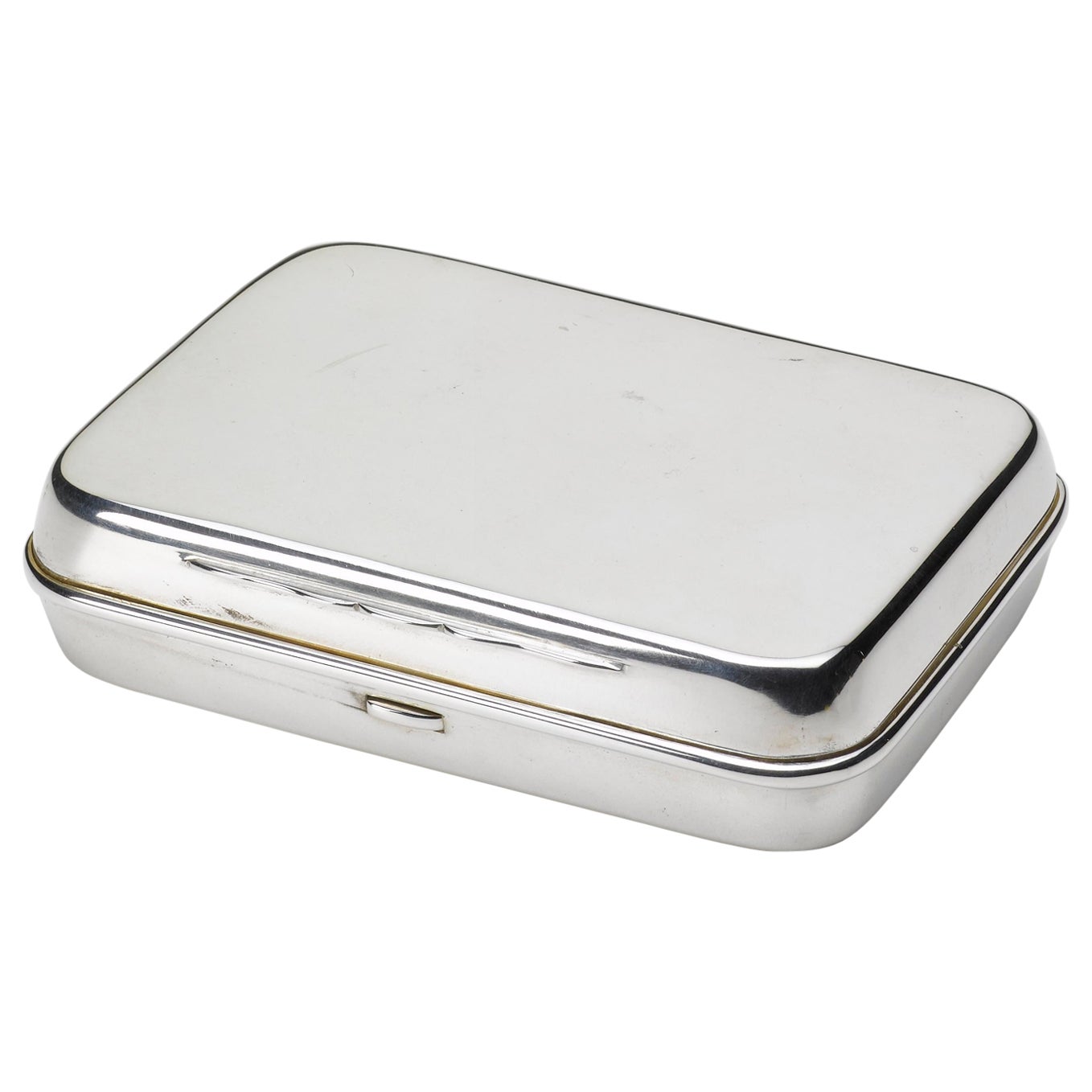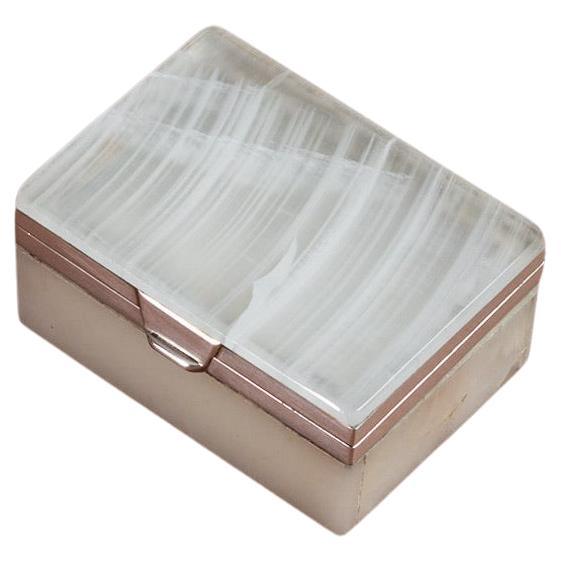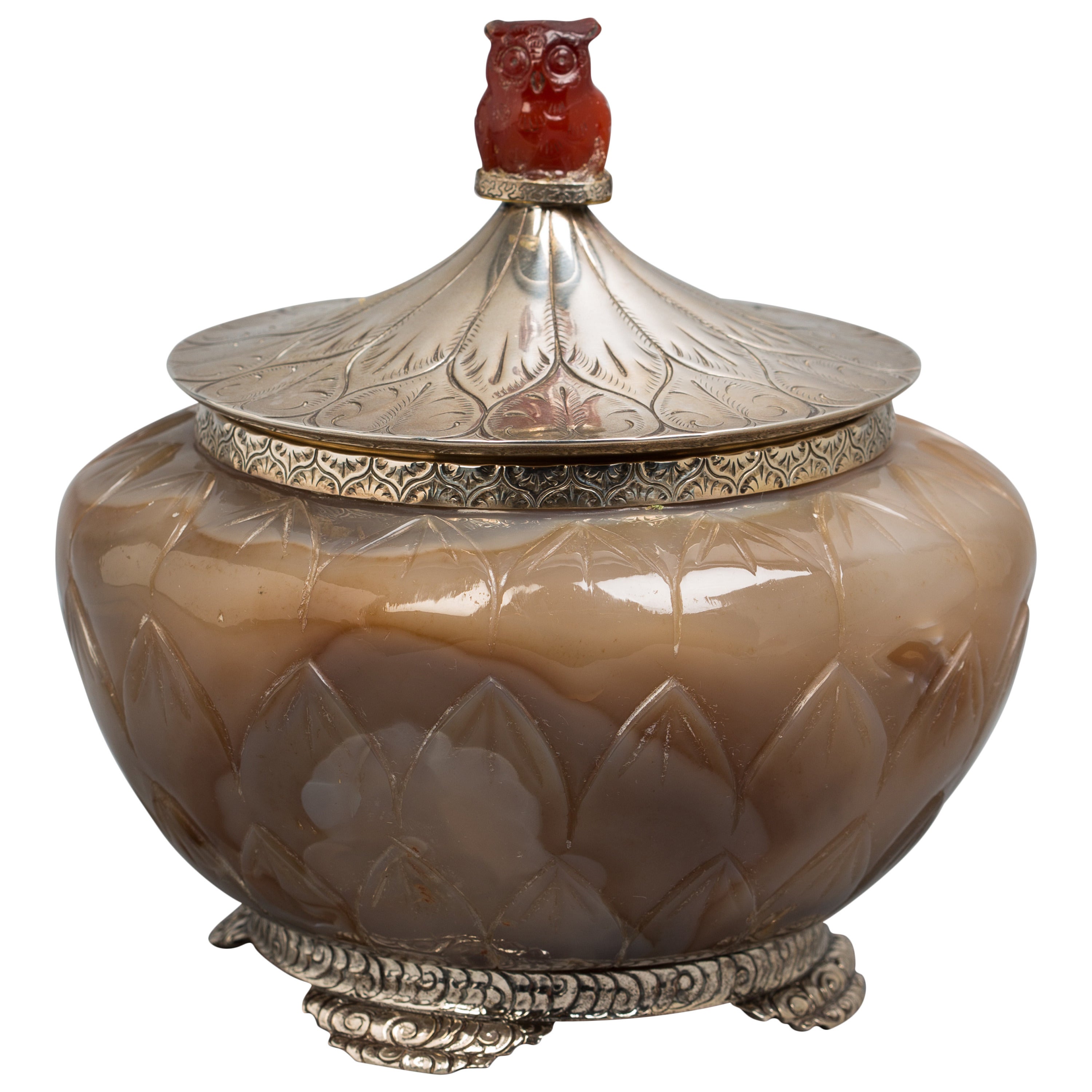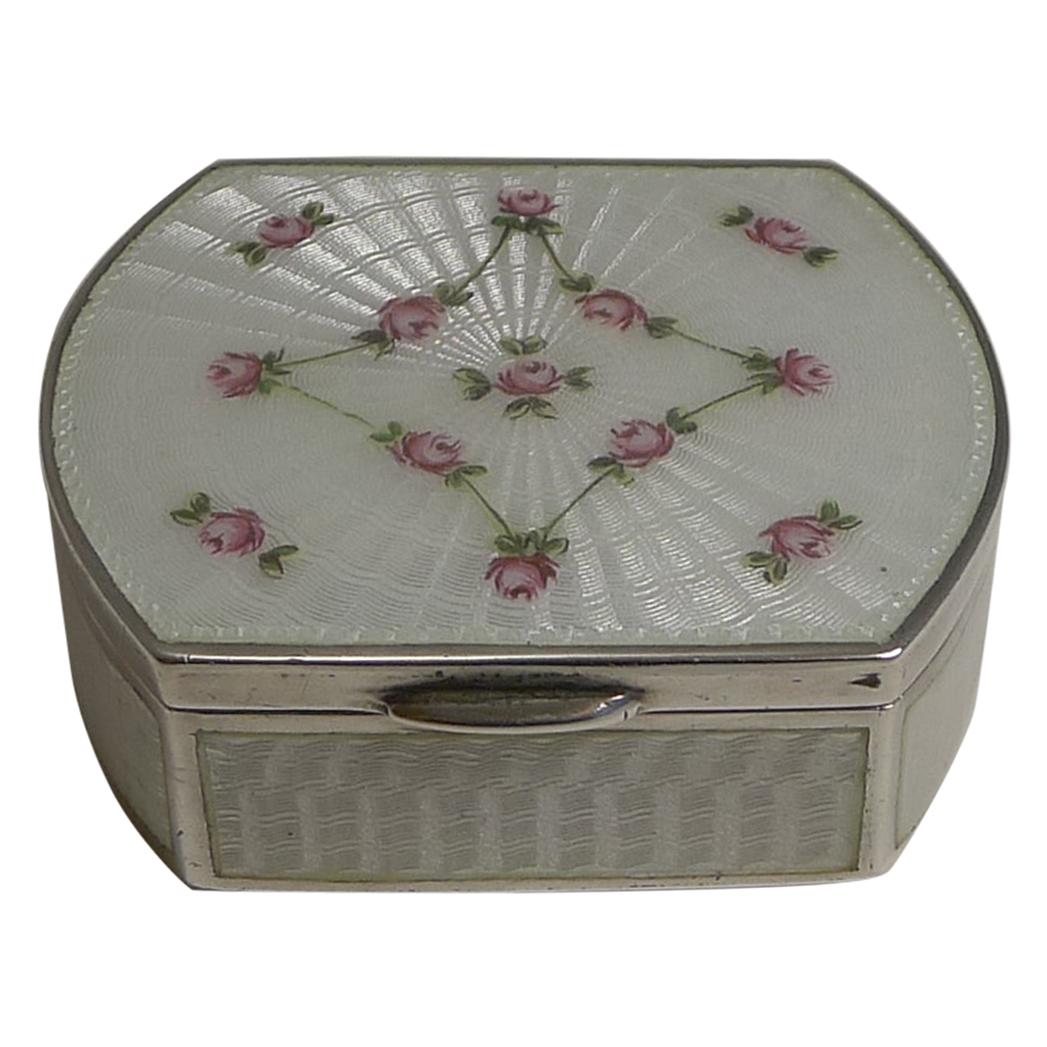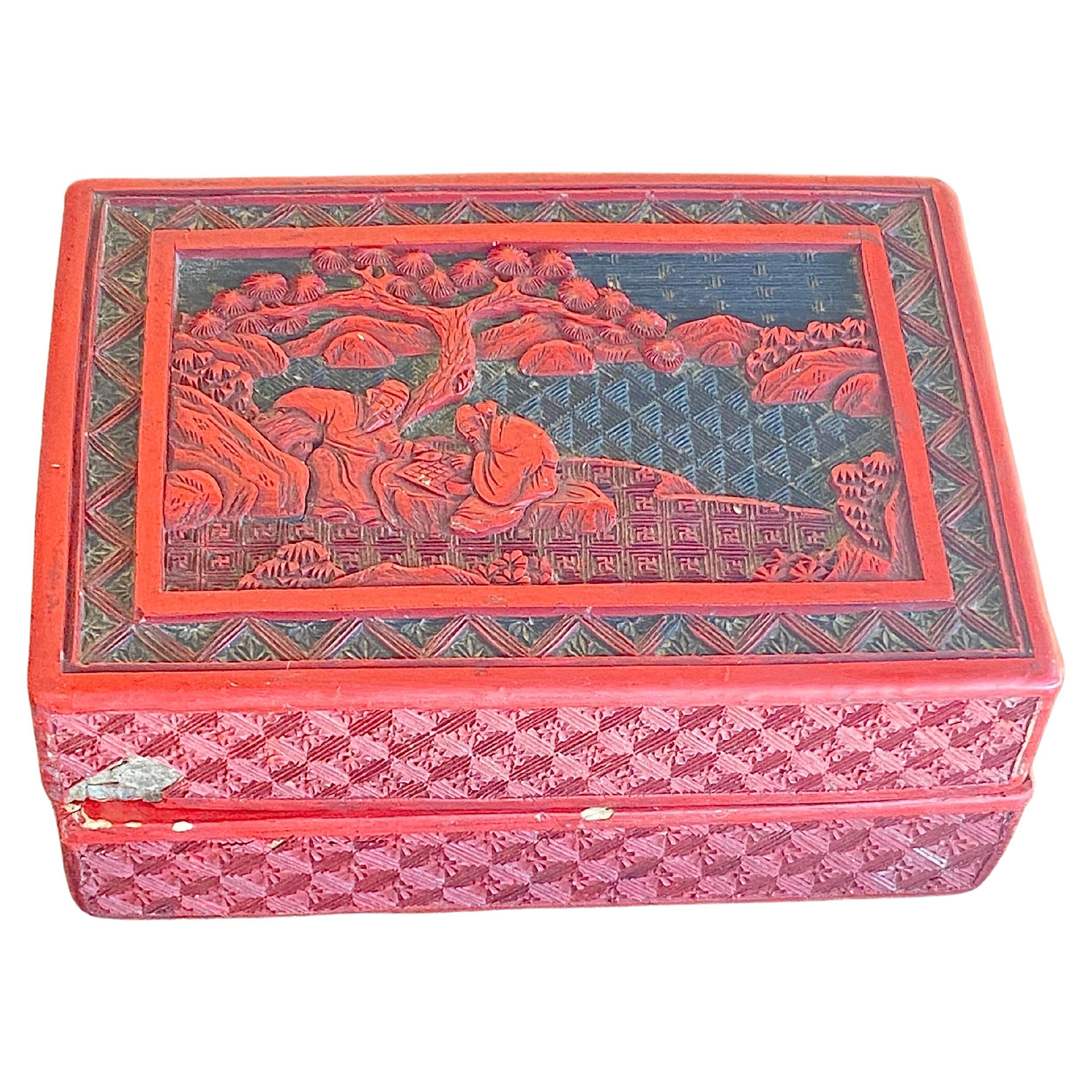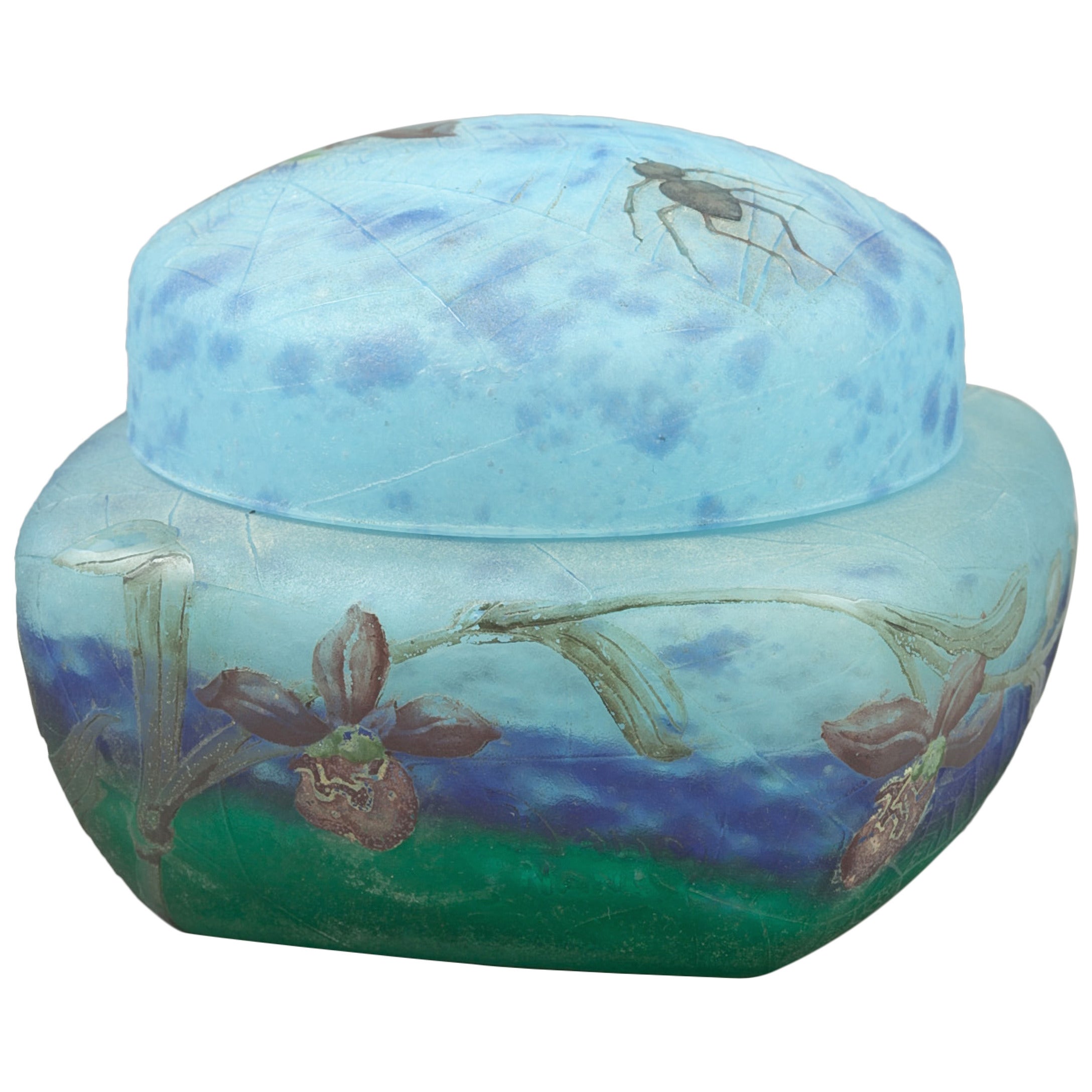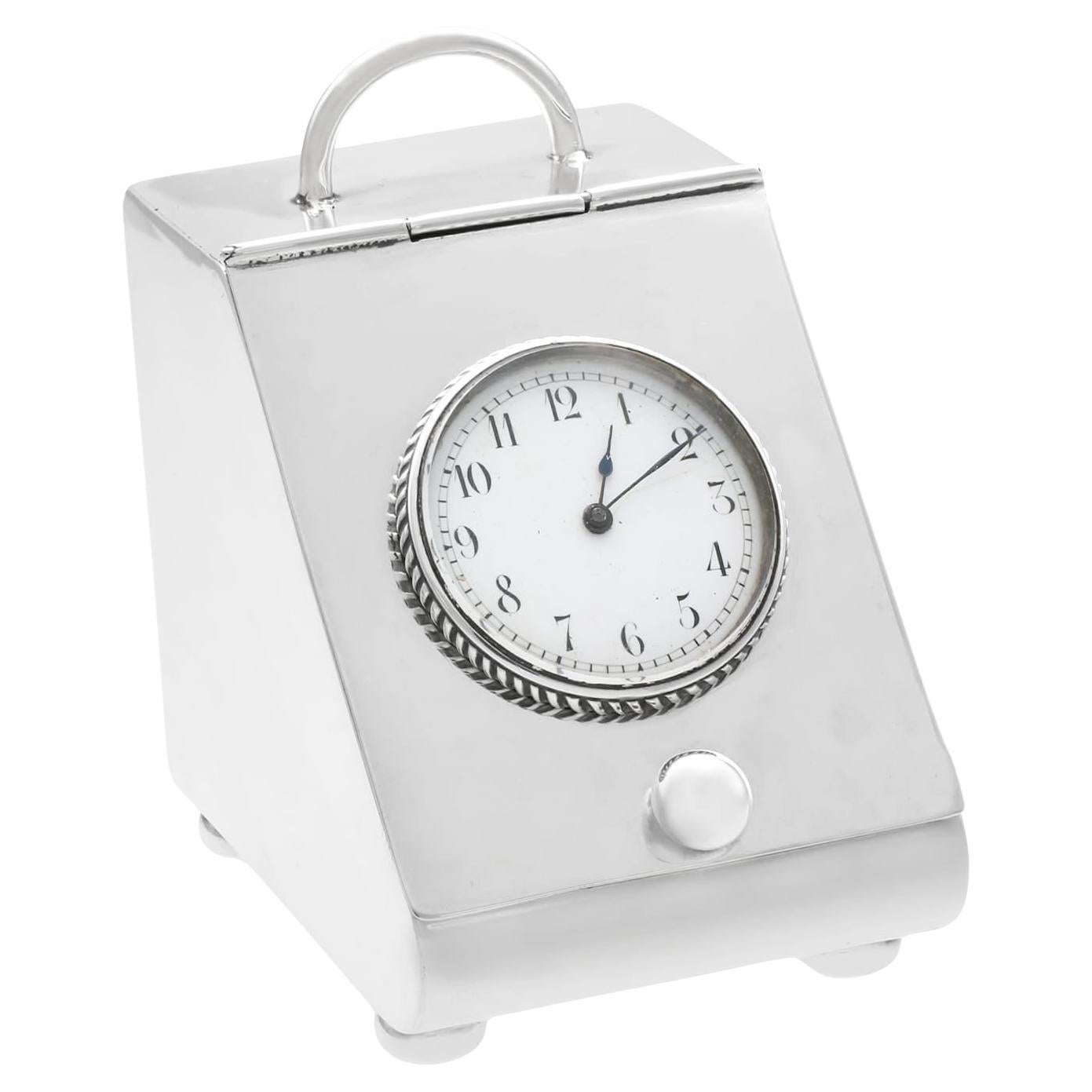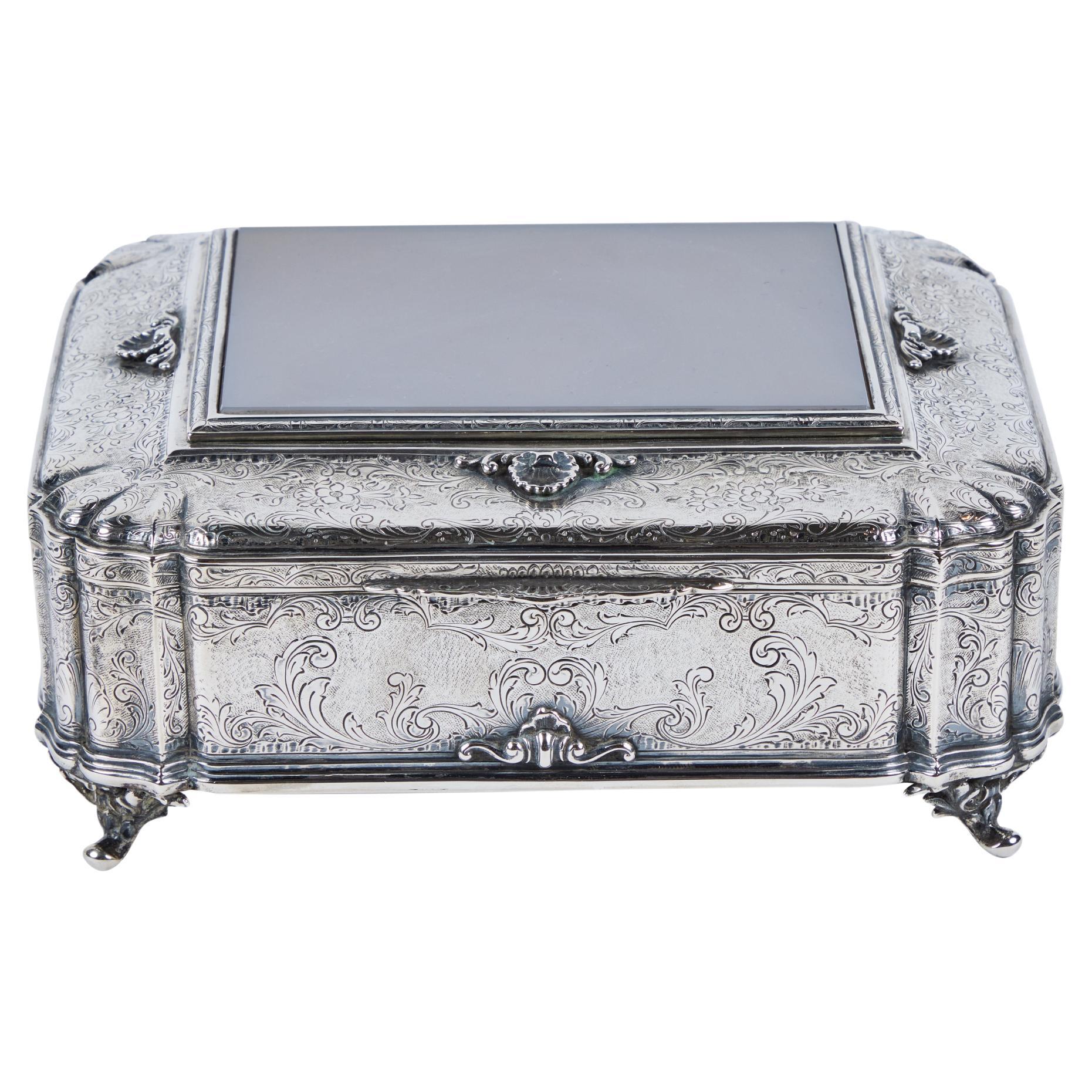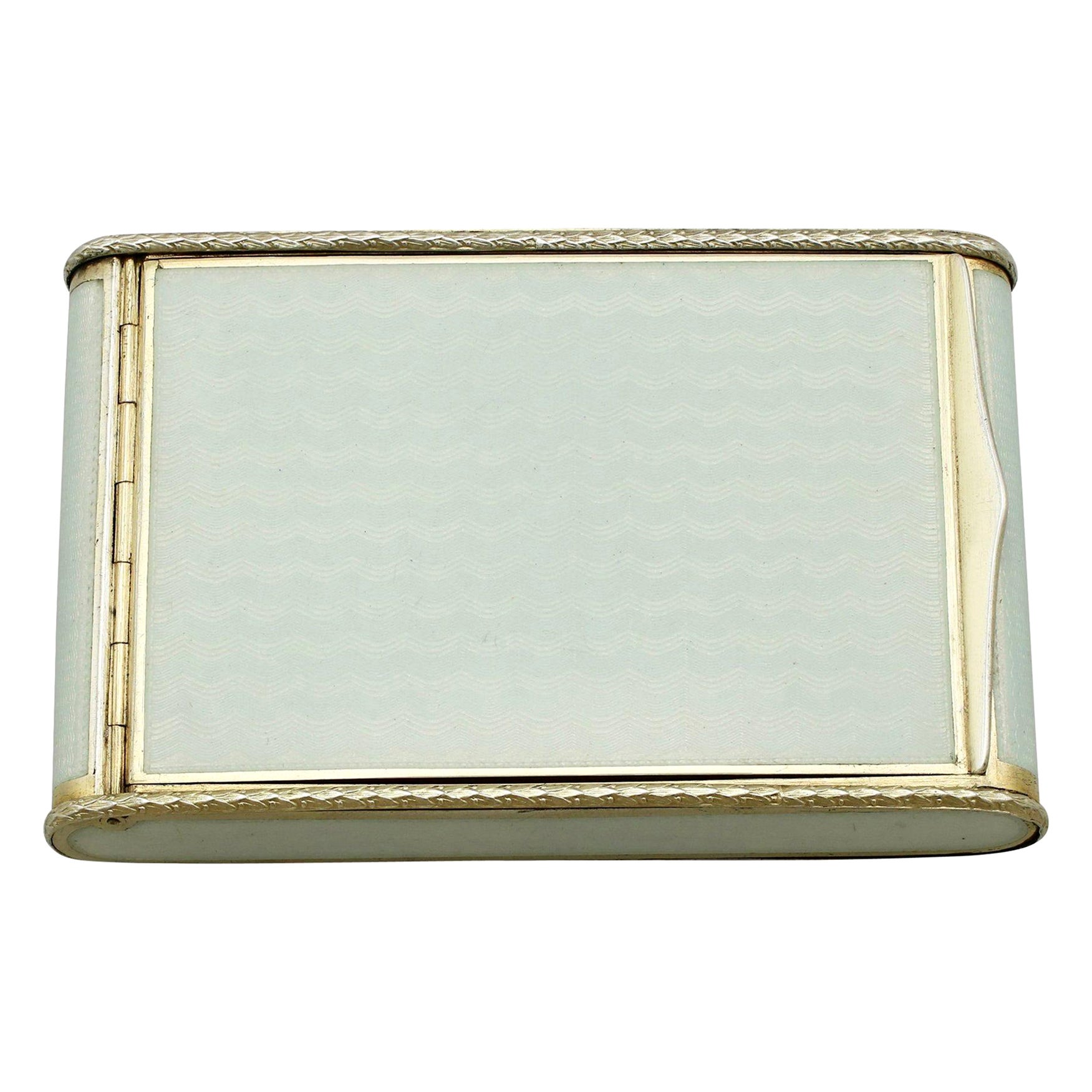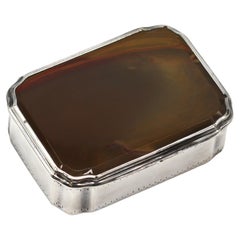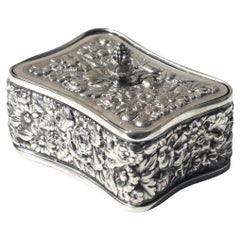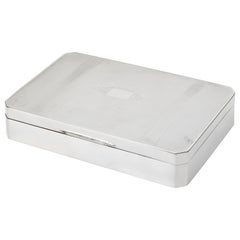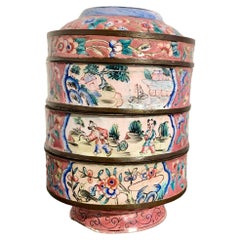
Chinese Sterling Silver Box and Cover circa 1900, Hallmarked and Stamped WH90
View Similar Items
Want more images or videos?
Request additional images or videos from the seller
1 of 5
Chinese Sterling Silver Box and Cover circa 1900, Hallmarked and Stamped WH90
About the Item
- Dimensions:Height: 2.5 in (6.35 cm)Width: 6.5 in (16.51 cm)Depth: 3.5 in (8.89 cm)
- Materials and Techniques:
- Period:1900-1909
- Date of Manufacture:circa 1900
- Condition:
- Seller Location:West Palm Beach, FL
- Reference Number:1stDibs: LU3860116106721
About the Seller
5.0
Vetted Seller
These experienced sellers undergo a comprehensive evaluation by our team of in-house experts.
Established in 1989
1stDibs seller since 2018
92 sales on 1stDibs
Typical response time: 8 hours
More From This SellerView All
- Silver-Mounted Agate Box, Probably English, circa 1870Located in West Palm Beach, FLA silver-mounted agate box, probably English, circa 1870 rectangular, comprising two plaques of moss agate set as the base and lid of a hinged box with silver mounts, apparently unm...Category
Antique 19th Century Decorative Boxes
MaterialsSilver
- Tiffany & Co. Silver-Soldered Stamp Box and CoverBy Tiffany & Co.Located in West Palm Beach, FLTiffany & Co. Silver-soldered stamp box and cover. Early 20th. Century. Of slightly-curved rectangular form. 3 by 2 1/4 in., Weighted.Category
20th Century More Desk Accessories
MaterialsSilver
$1,100 / item - Chinese Carved Jade Box and CoverLocated in West Palm Beach, FLA Chinese Carved Jade Box and Cover, carved in the form of a horned mythical tortoise standing on four balls, the cover with a small tortoise and o...Category
20th Century Antiquities
MaterialsCeramic
- Daum Nancy Etched and Enamelled Glass Box with Cover, France, circa 1900Located in West Palm Beach, FLDaum Nancy etched and enamelled glass box with cover, France, circa 1900, decorated with a Dutch landscape in black and grey enamel on colourless glas...Category
20th Century Jars
MaterialsGlass
- Chinoiserie Gilt-Metal Glass BoxLocated in West Palm Beach, FLA Chinoiserie Gilt-Metal glass box 19/20th century painted with a Chinese Figure gilt border, Provenance: Formerly in a French collection.Category
20th Century Decorative Boxes
MaterialsPorcelain
- Porcelain Box, English, Late 19th CenturyLocated in West Palm Beach, FLPorcelain box, English, late 19th century The rectangular hinged cover painted with a figural panel and inscribed "Round and Sound" Measure: Length 5 in. (12.7 cm.).Category
Antique Late 19th Century Decorative Boxes
MaterialsPorcelain
You May Also Like
- Hallmarked Silver Plated Keepsake Box, Sheffield, UK, circa 1900Located in Colorado Springs, COOffered is a stunning silver plated keepsake box dating to 1900, with associated hallmark. This small box includes a wooden interior with two slots and a blank square on top where initials could have been engraved. A well maintained, elegant piece, this antique silver box is an excellent addition to any silver or home decor collection. Trinket or keepsake boxes have taken on many forms since their first conception in ancient times. However their purpose remains the same; to store jewelry and other items precious to the owner. Originally, these boxes were used specifically for jewelry. These were in common use as early as 5000 BC in Ancient Egypt, when the majority of Egyptians, both male and female, wore jewelry. Boxes were used to keep these gemstone encrusted items safe. In Ancient Rome, jewelry was a status symbol. Rings and brooches were utilized to represent ones status in society. Again, boxes were needed for security and storage purposes. Finding early examples of these are quite rare. Victorian and Edwardian examples of trinket boxes are far more common. This is because owning jewellery was a luxury until the Victorian era- let alone possessing so much a box was needed to store it all. Fine jewelry and other items became available to the masses after the industrial revolution due to the reduction in production costs. This led to a demand for trinket boxes, which were much smaller than jewelry boxes and therefore better suited to the needs of the middle class who did not yet possess an abundance of jewelry. In Victorian households, collectables and other items of interested were also stashed inside these boxes. This is why they are known as trinket or keepsake boxes, rather than just jewelry boxes, although of course jewelry was also stored in them. Trinket boxes were produced in large numbers around this time. Many were lined with colored plush or velvet or rich wood. More elaborate designs had interior divisions and trays for rings and other pieces of jewellery. It was also common to see trinket boxes so small that they could only contain one item, such as a single ring. Ornate exteriors were created to reflect the value of the trinket boxes contents. The Edwardian era saw the introduction of new styles of trinket box. These included small circular or oblong boxes...Category
Antique Early 1900s English Art Deco Decorative Boxes
MaterialsSilver
$600 Sale Price20% Off - Hallmarked Silver Plated Keepsake Box, Sheffield, Uk, Circa 1900Located in Colorado Springs, COOffered is a stunning Sheffield silver keepsake box dating to 1900, with associated hallmark. This small box includes a clean interior and rounded corners. The box is free of names or initials, but would have been used to house keepsakes such as jewelry or cufflinks. A well maintained, elegant piece, this antique silver box is an excellent addition to any silver collection. Trinket or keepsake boxes have taken on many forms since their first conception in ancient times. However their purpose remains the same; to store jewelry and other items precious to the owner. Originally, these boxes were used specifically for jewelry. These were in common use as early as 5000 BC in Ancient Egypt, when the majority of Egyptians, both male and female, wore jewelry. Boxes were used to keep these gemstone encrusted items safe. In Ancient Rome, jewelry was a status symbol. Rings and brooches were utilized to represent ones status in society. Again, boxes were needed for security and storage purposes. Finding early examples of these are quite rare. Victorian and Edwardian examples of trinket boxes are far more common. This is because owning jewellery was a luxury until the Victorian era- let alone possessing so much a box was needed to store it all. Fine jewelry and other items became available to the masses after the industrial revolution due to the reduction in production costs. This led to a demand for trinket boxes, which were much smaller than jewelry boxes and therefore better suited to the needs of the middle class who did not yet possess an abundance of jewelry. In Victorian households, collectables and other items of interested were also stashed inside these boxes. This is why they are known as trinket or keepsake boxes, rather than just jewelry boxes, although of course jewelry was also stored in them. Trinket boxes were produced in large numbers around this time. Many were lined with colored plush or velvet or rich wood. More elaborate designs had interior divisions and trays for rings and other pieces of jewellery. It was also common to see trinket boxes so small that they could only contain one item, such as a single ring. Ornate exteriors were created to reflect the value of the trinket boxes contents. The Edwardian era saw the introduction of new styles of trinket box. These included small circular or oblong boxes...Category
Antique Early 1900s British Art Deco Decorative Boxes
MaterialsSilver
- Chinese Canton Enamel Round Stacking Boxes and Cover, circa 1900, ChinaLocated in Austin, TXAn absolutely lovely Chinese export pink Canton enamel round stacking box and cover, late Qing Dynasty, circa 1900, China. The circular stacking box consists of a bowl form base, ...Category
Antique Early 1900s Chinese Qing Decorative Boxes
MaterialsEnamel, Copper
- White Agate and Sterling Silver Box, Hallmarked London 1919Located in London, GBA stylish small box made from white Agate with grey striations running through the stone. A sterling silver hinge and frame join the top and bottom sections. Originally used as a sta...Category
Vintage 1910s British Decorative Boxes
MaterialsAgate, Sterling Silver
- Agate and Silver Covered Container, circa 1900Located in New York, NYThe Agate bowl is 18th century. This Chinese agate bowl was converted into a container with silver mounts and cover and a carnellion owl finial, circa 1900. Although unmarked, we attribute the work as American based Upon the gauge, quality and color of the silver. Possibly attributed to the firm Black, Starr and Frost, circa 1900 who specialized in combining Chinese hardstone objects...Category
Antique Early 1900s Chinese Decorative Boxes
MaterialsAgate, Silver
- Antique Austrian Sterling Silver and Guilloche Enamel Pill Box, circa 1900Located in Bath, GBAn absolutely stunning large antique Viennese sterling silver pill box made from a hefty gauge of Austrian silver. All sides are decorated with a white guilloche enamel showcasing...Category
Antique 1890s Austrian Late Victorian Decorative Boxes
MaterialsSterling Silver, Enamel
Recently Viewed
View AllMore Ways To Browse
Box And Cover
Hallmark Stamps
Sterling Silver Box
Silver Antique Box
Antique Silver Boxes
Antique Silver Box
Silver Boxes Antique
Antique Sterling Silver Box
Antique Sterling Silver Boxes
China Stamps
Antique Wood Stamp
Sterling China
Chinese Stamp
Sterling Stamp Box
Silver Stamp Box
Asian Silver Box
Chinese Silver Box
Chinese Silver Boxes
